- Home
- Walks
- East Yorkshire Coast
- Spurn Point
Exploring Spurn Point’s Wildlife and Coastal Views
As we stood on the windswept tip of Spurn Point, our site map flapped in the gusts.
This fragile, shifting peninsula marks the beginning of the Holderness Coast, where tides and gales constantly battle the land. The narrow spit stretched out before us, with the churning Humber Estuary on one side and the pounding North Sea on the other.
It was magnificent, but if I’m being honest, I felt a little intimidated.
Spurn is legendary among birders, a place where experts rack up incredible sightings. I was arriving with a camera and a lot of enthusiasm, but I worried I wouldn't know what to look for, or that I wouldn't fit in with the seasoned veterans.
I hoped to see some amazing birds, but a bigger part of me just hoped I wouldn’t look like a total novice.
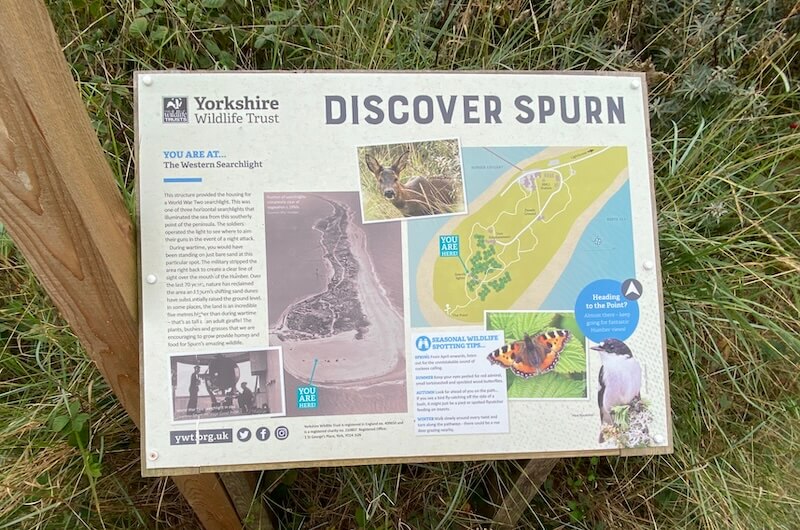 Photo taken on our second visit when we reached Spurn Point itself
Photo taken on our second visit when we reached Spurn Point itselfDay 1: Finding My Feet
We had planned our trip for the thrill of the autumn migration in September, travelling a day early and navigating winding roads to England's easternmost tip.
A highlight was crossing the Greenwich Meridian, the imaginary line dividing the Earth into two hemispheres.
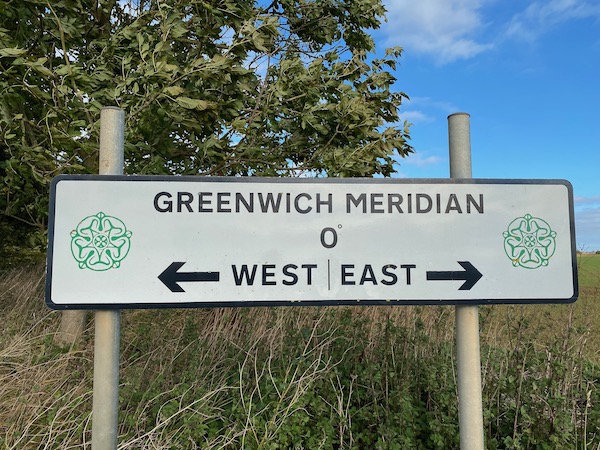
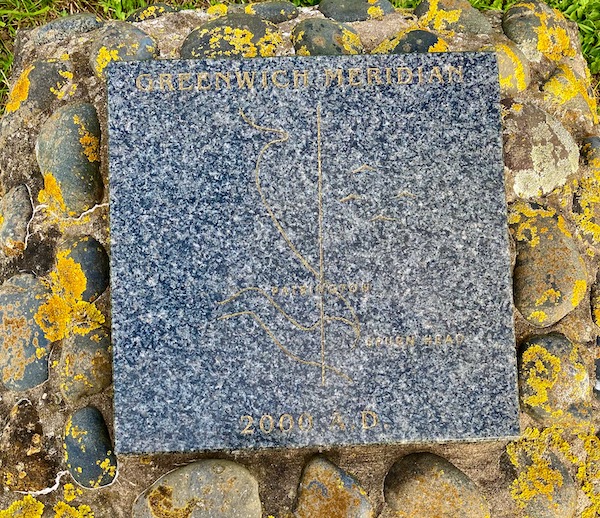
Upon arrival at Spurn Point, our first port of call was the Yorkshire Wildlife Trust Discovery Centre and the welcoming aroma of homemade soup at the Blue Bell Café. With renewed energy, we ventured out.
We headed to the Sea Watching Hide, a simple wooden structure where a group of volunteers had gathered. This, I thought, is where the real birding happens. The air was thick with a language I barely understood.
"Five Gannets just passed the platform," one announced, without missing a beat. "Red-throated Diver in front of the fives!" another called out, her pen already scratching on a notepad. Their calls were quick and confident.
I followed their gazes to the distant wind turbines, the "fives" as the locals called them, and squinted, trying to make sense of the specks on the horizon. The birds were a mystery, too distant for my eyes and certainly too far for my camera.
It was in that moment I felt the gap between me and them, the true birdwatchers.
We bid them farewell and walked to the Wash-Over point. As the light softened, I took a few record shots, the sound of the sea echoing in our ears as we returned to our cottage for the night.
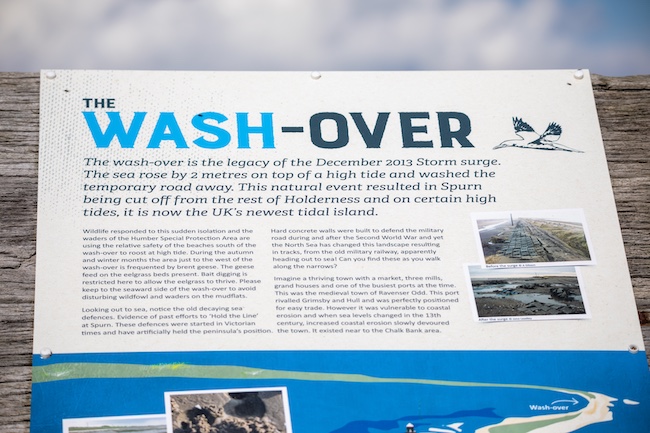
Day 2: The First Small Wins
After a mix-up, we arrived at the Spurn Bird Observatory for a guided walk with minutes to spare. The wild weather had deterred everyone else; we were the only two. Our guide, Johnnie, led us around "The Triangle," where a lone Curlew probed the mudflats.
We spotted a late Hobby cutting across the sky, and then, a real breakthrough.
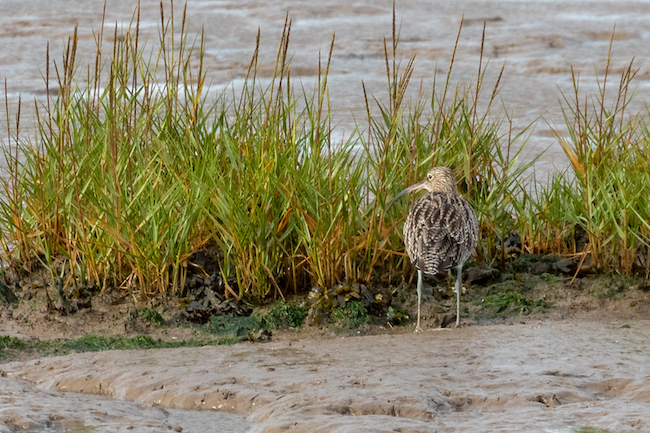 Curlew on the Humber estuary
Curlew on the Humber estuaryAs we revisited the Sea Watching Hide, I was lucky enough to see a Short Eared Owl flying low over the shore. It wasn't a distant speck; it was real, tangible, and a thrill that went straight to my heart. It was the first reward for braving the elements.
Later, a Wheatear briefly caught my eye, and despite heavy rain, I was thrilled to spot a Roe Deer moving through a field of sunflowers. She vanished quickly, but the encounter was a moment of quiet success that boosted my morale.
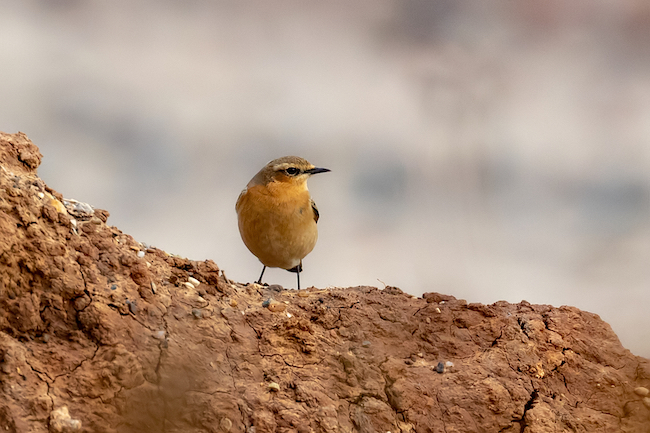
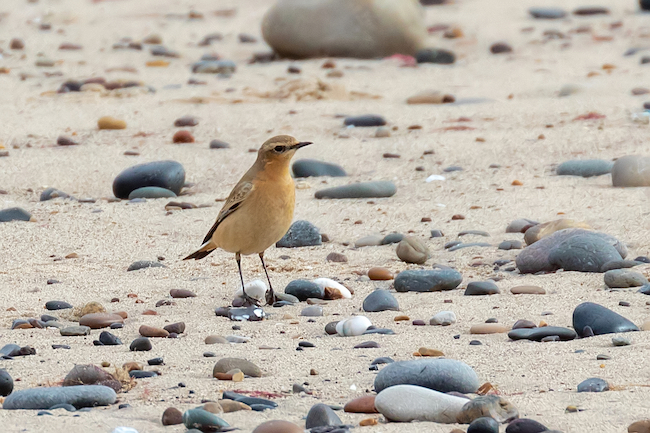 Close views of a Wheatear on the beach at Spurn Head
Close views of a Wheatear on the beach at Spurn HeadBy the time we retreated from the stinging rain, I felt like I was starting to see the magic of this place.
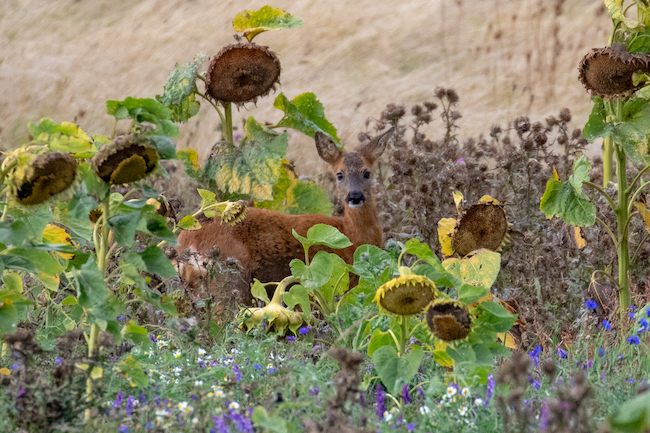
Day 3: Growing in Confidence
Sunday dawned wet and wild.
We started at the Kilnsea Wetlands Nature Reserve, spotting small groups of waders - Redshank, Knot, Dunlin, and Turnstone. My attention was caught by a Grey Heron we nicknamed Shakespeare, who repeatedly picked up a feather as if it were a quill.
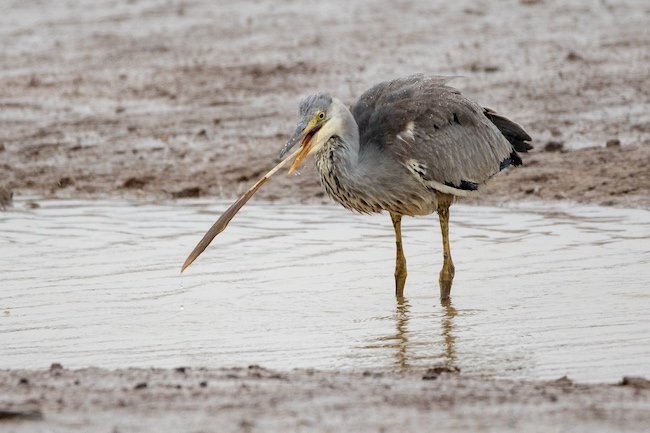 Shakespeare with his quill.
Shakespeare with his quill.As the rain eased, the wind grew stronger.
Suddenly, a female kestrel hovered directly above us. Unlike the distant gannets from my first day, this bird offered clear views, its intense focus on the hunt mesmerising. It was a sighting I could understand, a moment of clarity that helped build my confidence.
We also saw several Reed Buntings and Meadow Pipits, birds I was beginning to recognise.
Cold and wet, we retreated to the Crown and Anchor for lunch, watching the birds from its large picture windows.
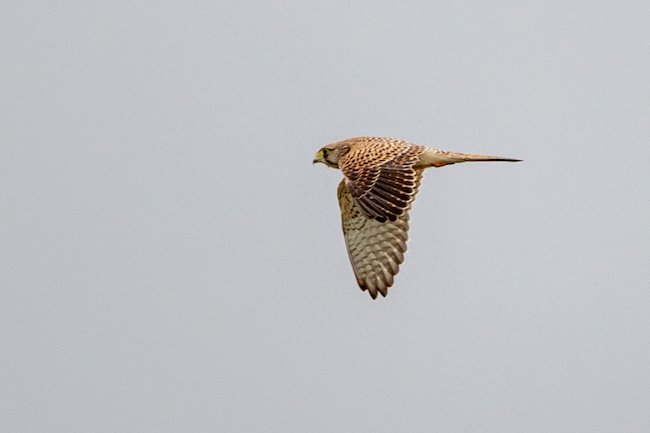
Day 4: Ambition and a Lesson in Humility
Taking advantage of a break in the weather, we arrived at Kilnsea just after sunrise to capture the golden morning light. For the next hour, I was absorbed in photographing Curlew, Shelduck, a flock of Pink-Footed Geese, and a Little Egret.
My dedication was growing; as the best light faded, we decided we would need to arrive even earlier the next day.
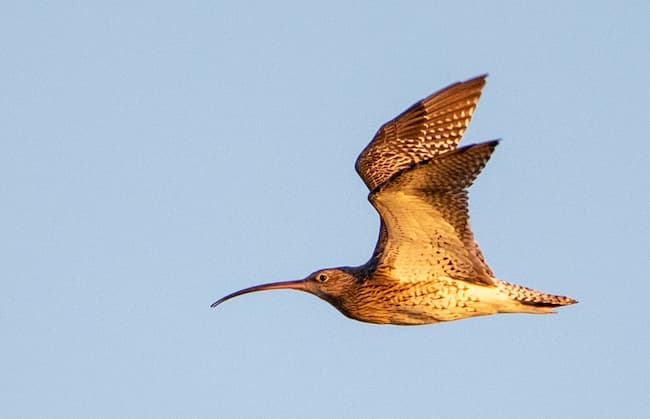 Curlew during the Golden Hour
Curlew during the Golden Hour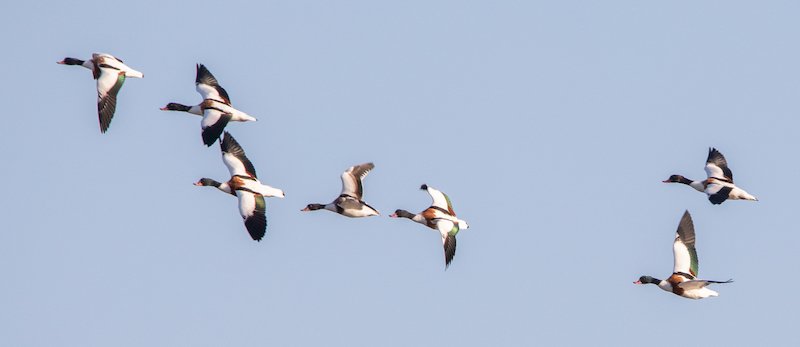 Shelduck flock
Shelduck flock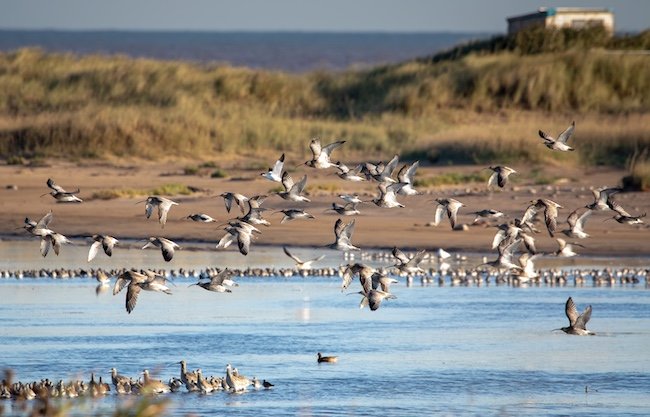 Flock of Curlew (with a single Avocet) over Beacon Ponds
Flock of Curlew (with a single Avocet) over Beacon PondsOne of our goals was to walk the three and a half miles to the end of Spurn Point. As we set out, the sun finally broke through.
The long walk, however, proved to be a lesson in itself.
My legs grew tired, and I collapsed onto a bench at the refuge shelter while my husband pushed on towards the lighthouse. He returned later, defeated. "It was further than I thought," he sighed.
We were both disappointed, but it was a humbling reminder that nature sets the terms here.
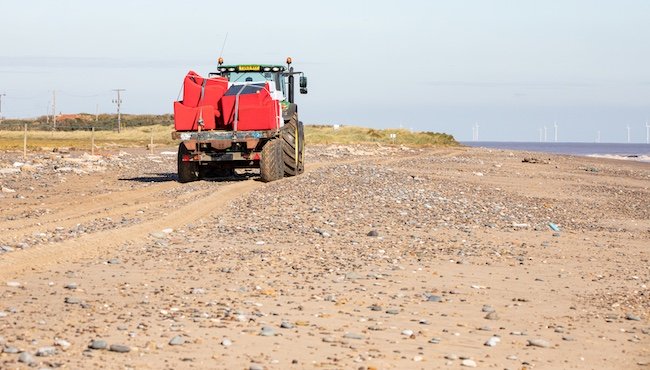 A tractor rumbled past us on the sand, its trailer loaded with furniture heading for some unknown destination
A tractor rumbled past us on the sand, its trailer loaded with furniture heading for some unknown destination World War 2 remains on the seashore
World War 2 remains on the seashoreOn our way back, we detoured up the Big Hedge Footpath, where a cluster of birdwatchers were huddled.
"Rustic Bunting," one whispered. We scanned the branches with them but couldn't distinguish the rare bird from its common cousins.
But something had shifted. Even without a sighting, we felt the shared thrill of the hunt, a sense of belonging to the group.
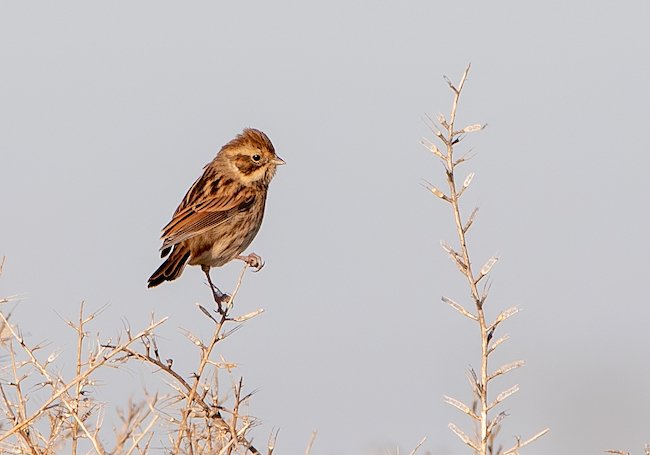 Female Reed Bunting
Female Reed Bunting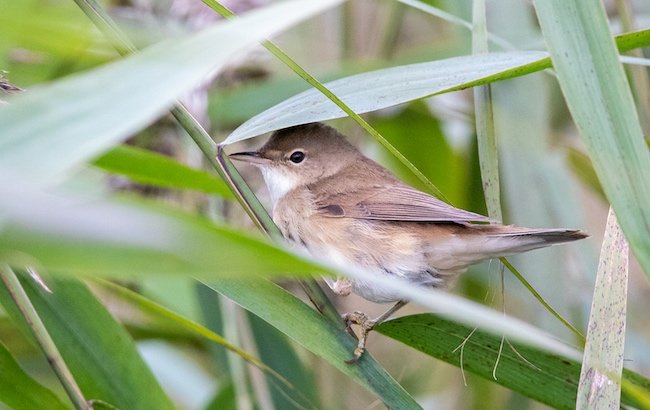 A Whitethroat in the reeds beside the field gate
A Whitethroat in the reeds beside the field gate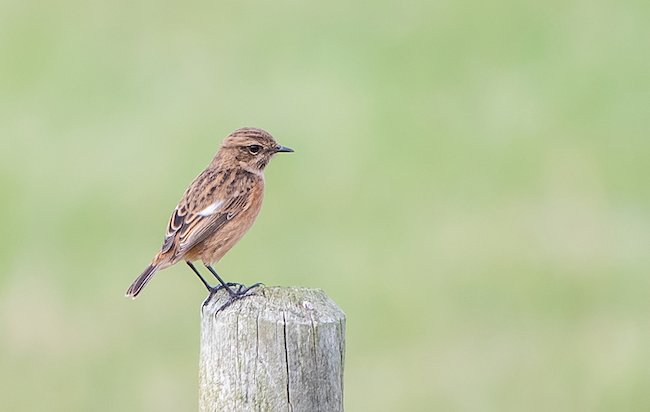 Female Stonechat
Female Stonechat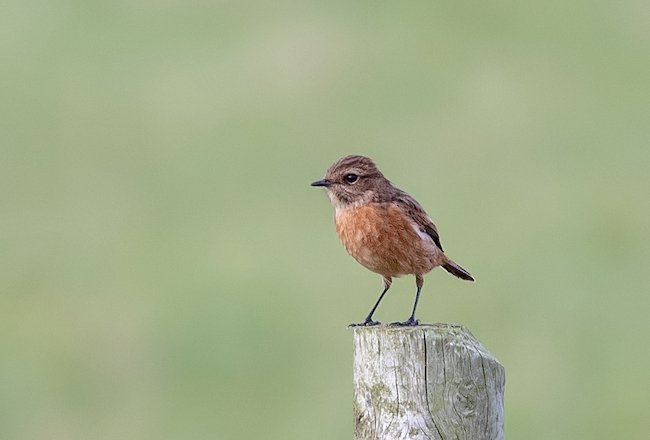 Male Stonechat
Male StonechatAs the light began to fade, a trio of deer appeared at the edge of the path, their large eyes watching us. I took a few photos, though the low light made them grainy.
Later, I would use one of these moments as the basis for a coloured pencil drawing.
For now, we just stood, enjoying the quiet of this windswept place and holding on to the memories of the day.
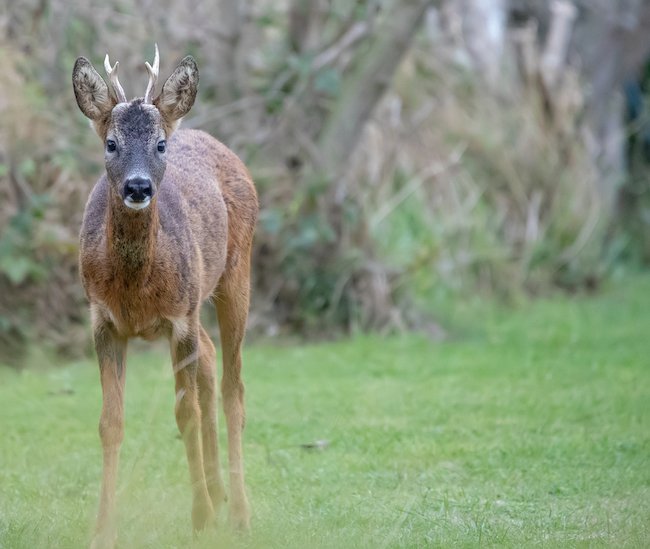 Roe deer buck (male)
Roe deer buck (male)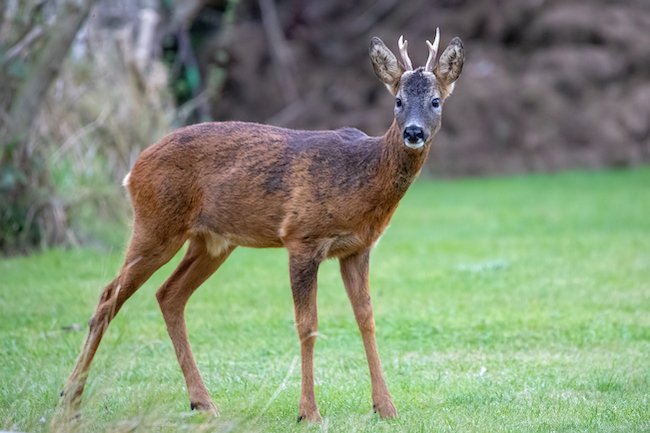 Buck side view
Buck side view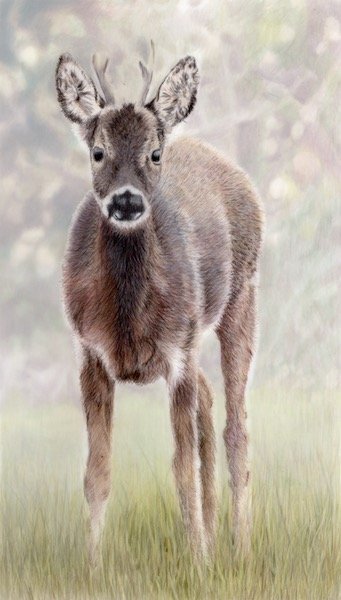 Pencil drawing by Carol Leather
Pencil drawing by Carol LeatherDays 5 & 6: Enduring the Storm, Finding the Spectacle
The trip's challenges weren't over.
An email from our host brought a flood warning, and we spent the evening moving all our gear off the floor. The storm was intense, but thankfully the floodwaters never reached us.
The next morning, as a reward for our persistence, the wetlands put on a show.
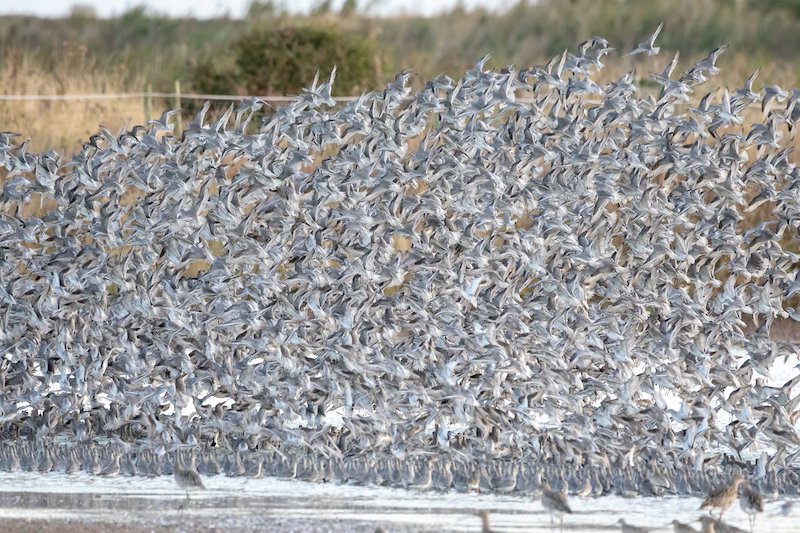 Large flock of waders
Large flock of wadersAs we stepped into the reserve, the sheer number of waders on the marsh was overwhelming. Suddenly, the entire flock erupted into the sky.
The cause? A pair of Hobbies, darting through the air with incredible speed. I raised my camera, their movements too quick to track effectively, but I managed one decent photo, a hard-won trophy.
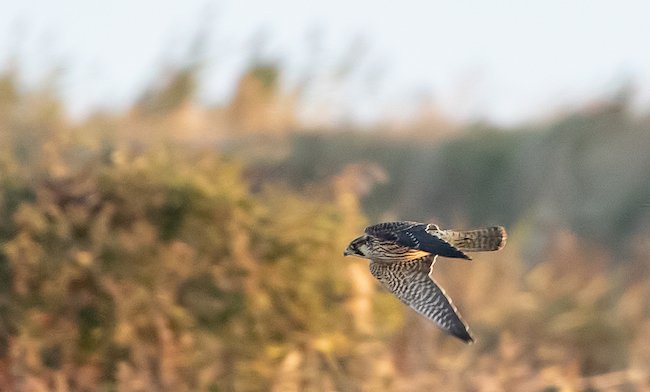 Hobby in flight
Hobby in flightLater, we saw the full power of the spring tide. The car park had vanished, its tarmac completely submerged. The path we had walked just days before was gone, a stark illustration of this ever-changing land.
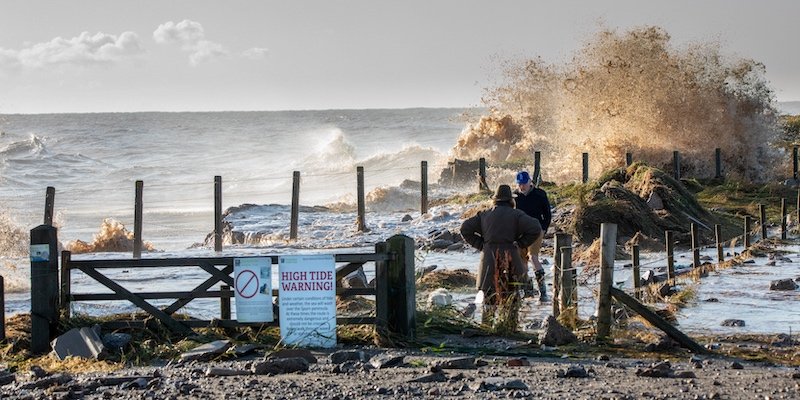
Day 7: The Final Test
On our last day, we returned to Kilnsea before dawn.
As we slipped into the hide, we saw it: a Brown Hare, sitting serenely in the golden light. Then, at the Canal Scrape, a Little Egret put on a fishing display. The quiet moments felt like a gift.
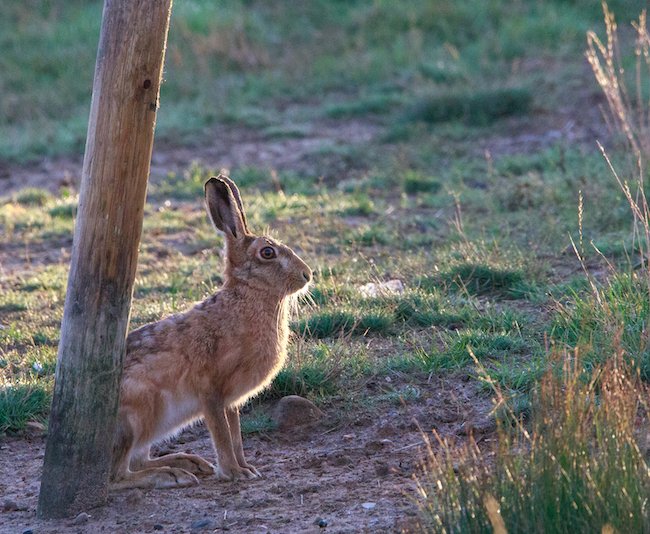 A sitting Brown Hare
A sitting Brown Hare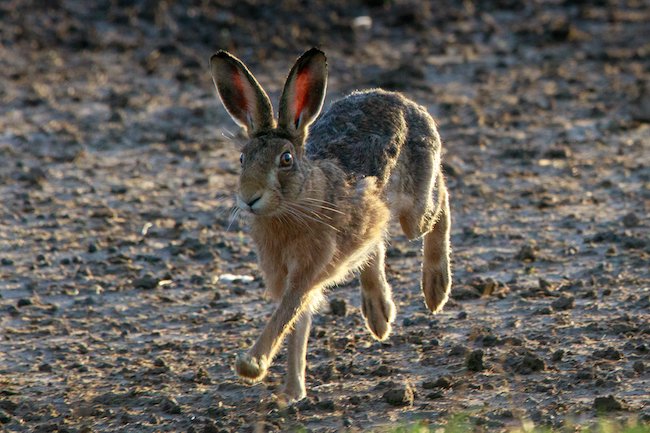 The Hare soon raced off
The Hare soon raced off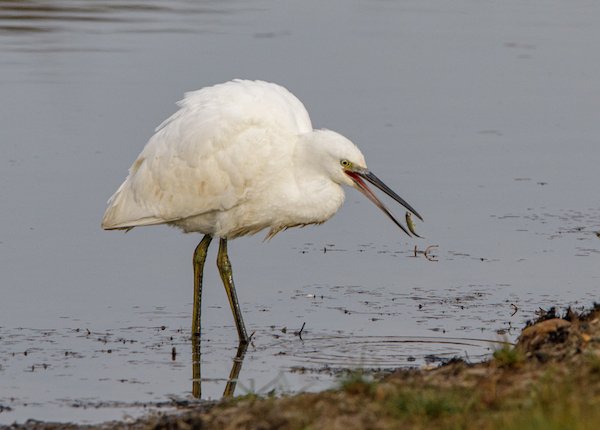
As we headed for a final visit to the Sea Watching hide, we saw a crowd hurrying in the opposite direction. "Booted Warbler amongst the sunflowers!" was the excited reply to our question.
My husband, his legs tired, opted to wait, but a new confidence spurred me on.
I decided to try. It was a conscious choice to step into the birding world on my own. I arrived at the gate and immediately felt that old familiar anxiety. I had a problem: I had never seen a Booted Warbler and had no idea what to look for.
Taking a breath, I turned to the experts around me, my vulnerability on my sleeve. "Could you show me where to look?" I asked.
The response was immediate and kind, a chorus of voices eager to share their passion. "See where two sunflower heads are behind that patch of mauve flowers?" someone offered. A hand gently guided my camera lens lower. "You're aiming too high."
Then, a quiet voice from behind me offered a perfect description.
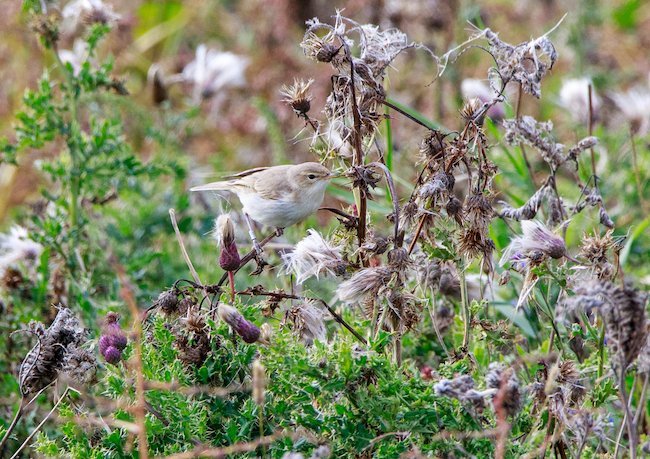 The rare Booted Warbler in the sunflower patch
The rare Booted Warbler in the sunflower patchJust as I was processing this, the Booted Warbler flew up, perching in plain sight. My camera struggled, but I managed a few record shots—enough to prove I’d seen it.
Their words weren't just directions; it was an act of inclusion. They weren't gatekeeping; they were opening the gate for me.
It was my first "rare" bird. The little bird wasn’t dramatic or colourful, but as I turned to leave, I found myself smiling. Perhaps I was becoming a proper birdwatcher after all.
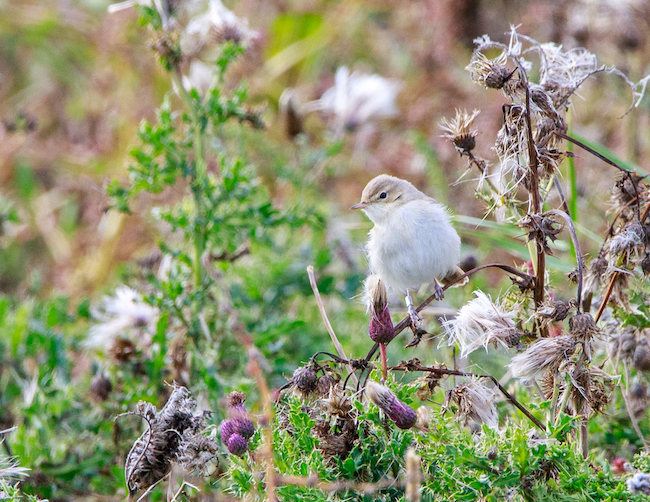
To Future Adventures, and an Invitation
Seeing that warbler wasn't just about spotting a rare bird; it was about realizing that I belonged. It was the perfect end to our visit to this special place where the North Sea meets the Humber Estuary.
If you've ever felt intimidated by a destination like Spurn Point, I hope my story changes your mind.
The secret I learned wasn't in having the best gear or knowing every bird call. It was in showing up, being curious, and not being afraid to ask for help. The community of people who love these wild places is often its most wonderful discovery.
As it turned out, we did return. We came back the next October, taking the Spurn Safari, exploring the lighthouse, and meeting two red foxes.
They were so used to people that they came close enough for me to photograph them with my iPhone—proof that you don’t always need a long lens for a magical wildlife encounter. You just need to be there.
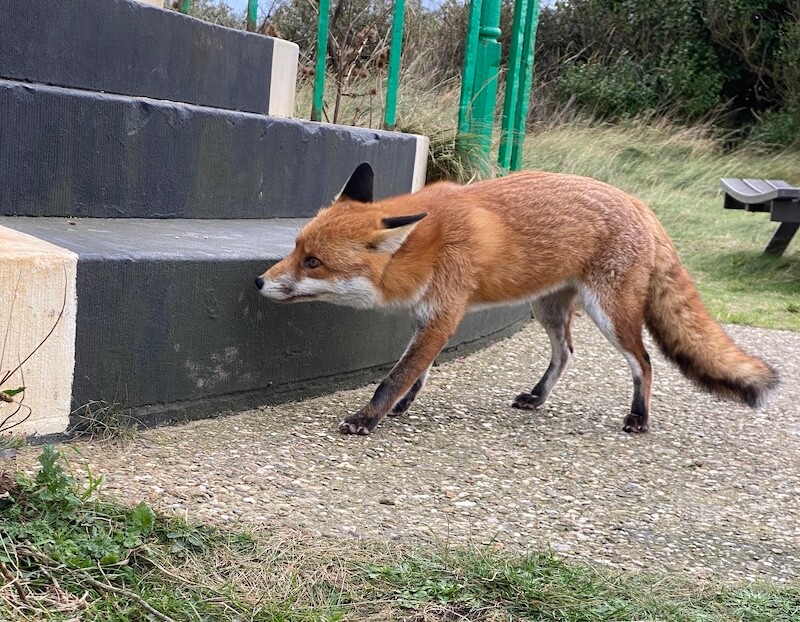
Further Reading
Related Walks & Locations
RSPB Bempton Cliffs - Our trip to RSPB Bempton Cliffs to see the breeding puffins, gannets, razorbills, guillemots, kittiwakes, fulmar and other seabirds.
Sea Bird Photography at Flamborough Head - An account of Bempton and Flamborough Head sea bird photography.
The East Yorkshire Coast - The East Yorkshire coast offers migrating birds, hidden coves, towering chalk cliffs and sea bird cities. Enjoy!
Related Wildlife and Photography Guides
Ideas for Autumn Photography - Experience the magic of autumn through a heartwarming story packed with ideas for autumn photography, perfect for capturing fall’s stunning colors and wildlife
How to Identify Wild Birds - Learn how to identify wild birds by shape, sound, size and behaviour – even if you're brand new to birding!
Low Light Wildlife Photography - Capture stunning wildlife images between dusk and dawn with essential gear tips, optimal settings, and expert advice.
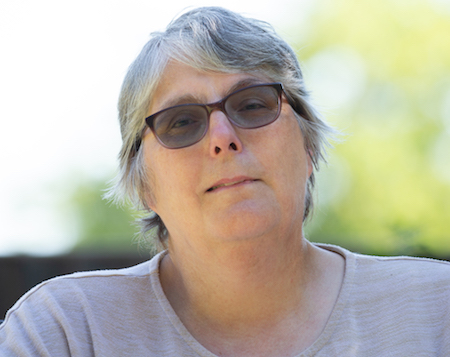
About the Author
For me, it’s never been just about bird names or camera settings, but the thrill of seeing a distant speck turn into a hunting kestrel.
After years of learning how to notice and photograph those moments, my camera has become the tool - and this site the field notebook - where I share what I’ve discovered.
If you’re ready to look a little closer, you’ll find the trips, lessons, and small wins that can help you see and photograph the wildlife right on your doorstep.
Step Behind the Wild Lens
If you've enjoyed your time here, the journey doesn't have to end.
I send out the Wild Lens newsletter on an occasional basis. It's where I share my latest field notes, the stories behind my favourite photos, and practical tips that don't always make it onto the site. It's your dose of quiet magic, delivered right to your inbox.
Join our community of curious explorers.


